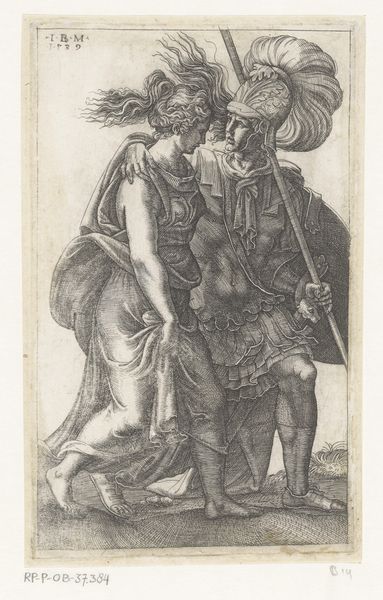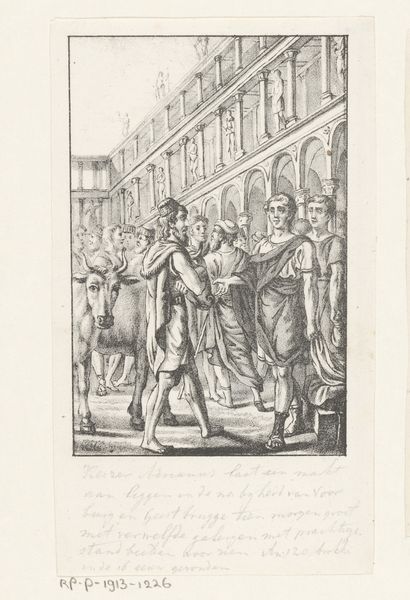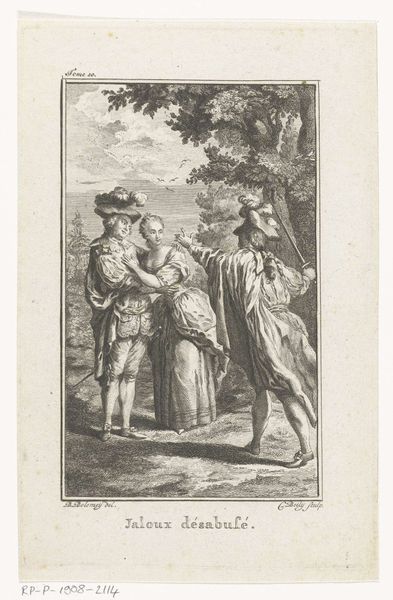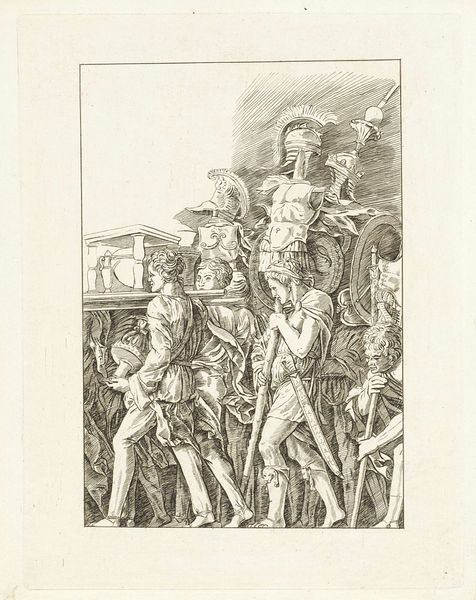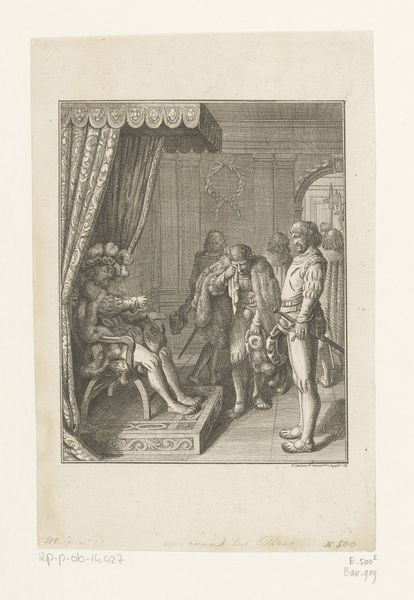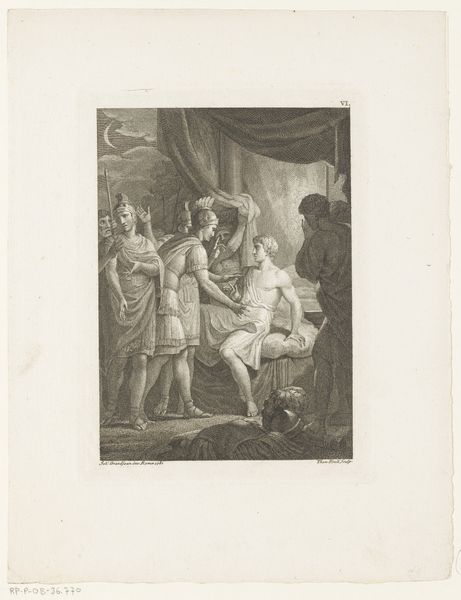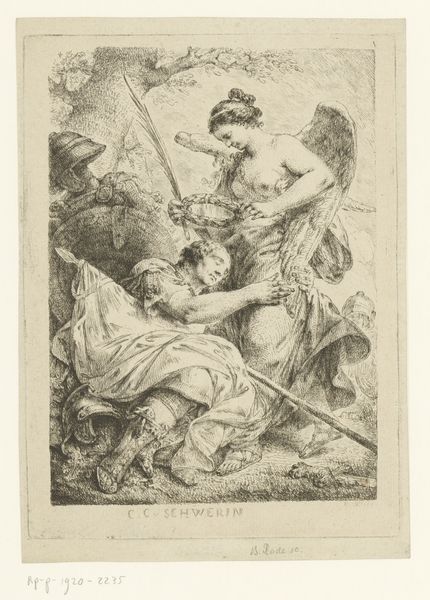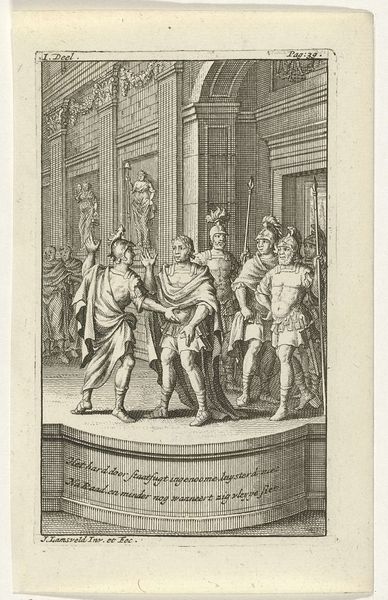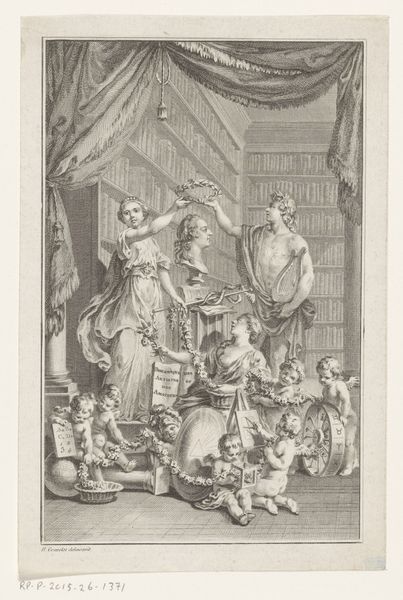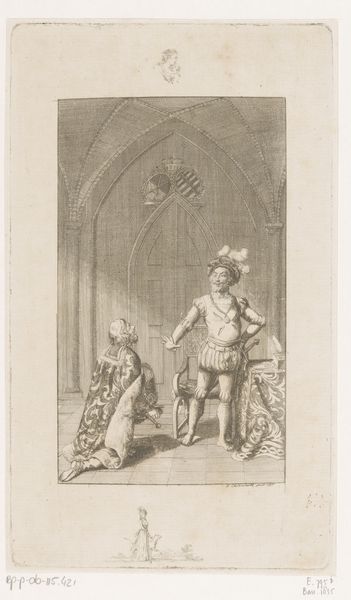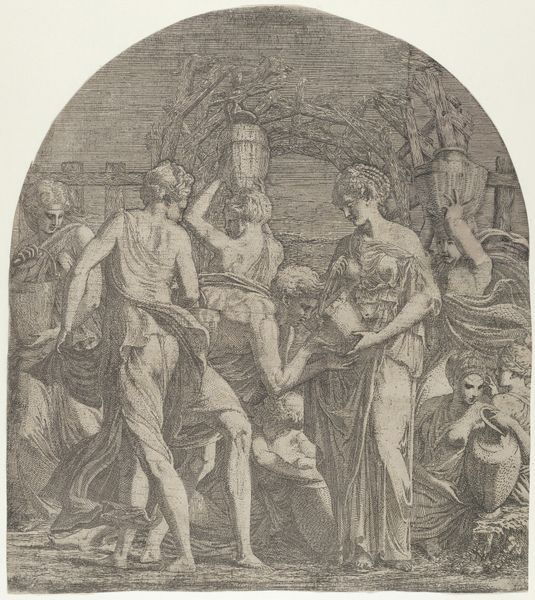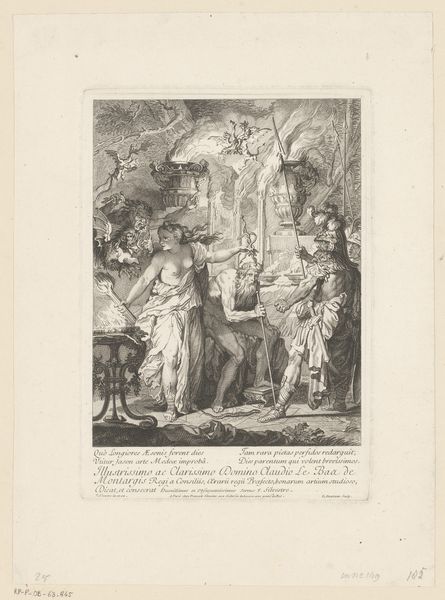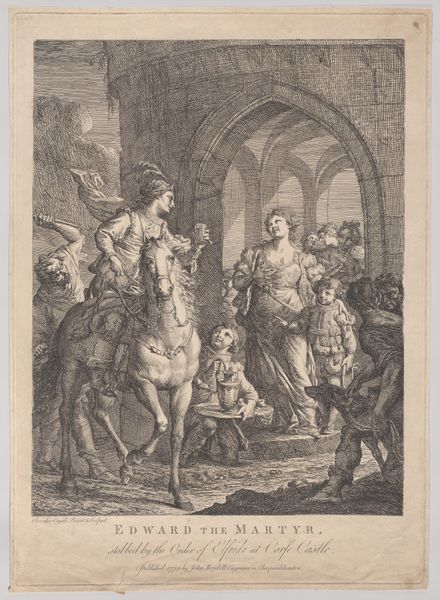
print, engraving
#
narrative-art
#
baroque
# print
#
old engraving style
#
figuration
#
genre-painting
#
engraving
Dimensions: height 143 mm, width 84 mm
Copyright: Rijks Museum: Open Domain
Curator: We're looking at "Vignet met vrouw omringd door mannen," an engraving by Jean Jacques Flipart, created between 1754 and 1758. It's part of the Rijksmuseum's collection. Editor: My immediate reaction? All those eyes are directed at the woman. I wonder, what kind of transaction is taking place here? Is this scene a formal audience, or perhaps a clandestine gathering? Curator: Considering Flipart’s context, he operated in a world deeply shaped by patronage and courtly life. This print, with its baroque flair, likely speaks to social dynamics of power and gender roles within that elite milieu. Notice how the men seem to frame her, almost as if displaying her. Editor: And the materials themselves tell a story, don't they? Engraving, as a printmaking technique, allowed for widespread dissemination. So, while the subject might be an elite gathering, the image could have reached a broader audience. It makes you wonder about the relationship between production, labor, and who got to see and own such imagery back then. The linear precision allowed a detailed story of each character’s expression but simultaneously removes something vital from the actual feeling. Curator: Exactly. Think about the social codes embedded in posture and dress. The woman's controlled demeanor, her elegant gown – they signal status, but perhaps also constraint. The composition places her slightly apart, creating a visual tension, a focal point surrounded. How complicit or compliant do you see the figure, or are you persuaded? Editor: The print technique here is all about controlled labor and craft knowledge. Each line etched onto the plate represents manual effort. We can then begin to ask ourselves about whose stories are not visible through this type of traditional representation. The precision feels a bit oppressive when reflecting on women in such times, perhaps this very engraving is what creates expectations of restraint. Curator: A fascinating point. And the choice of representing this vignette – perhaps from a play or novel? – suggests a commentary on public life, accessible and debated among those with access to prints. The social dynamics reflected may not have been easily shifted from the public's point of view, though widely displayed through popular printed media. Editor: Well, this examination, especially focusing on the engraving itself, pushes me to think more about those very people: how an object created by labour reaches consumption, as part of material history that challenges and also reproduces certain societal dynamics. It has more power to reflect society’s constraints than I initially thought. Curator: I agree. Thinking about this work helps us reconsider both art's engagement with the public sphere and also, perhaps, challenges inherent cultural constraints of past times that inform our current perspectives.
Comments
No comments
Be the first to comment and join the conversation on the ultimate creative platform.

